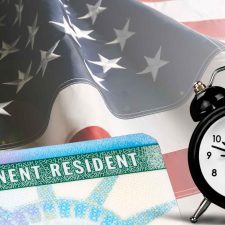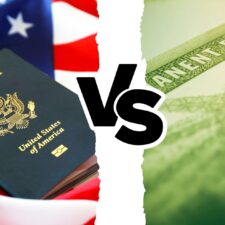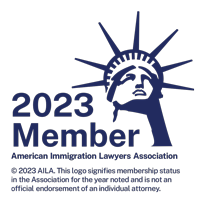Married? Green Card? The process may not be over yet…
So the big day is over, you’re married, and you’ve applied for a green card through marriage as a spouse of a US Citizen. It gets approved – congratulations!
You might be inclined to try to forget about anything to do with immigration or you might think you never have to deal with the US Citizenship and Immigration Services (USCIS) again. But this is not always the case!
If you were married for less than 2 years on the day you were given permanent residency (your “Green Card”), then your permanent residence is conditional. The reason USCIS does this is obvious – because you were not married that long they want you to prove you are still married and did not get married to circumvent the immigration laws of the United States (basically to see whether you attempted to fake a good faith marriage). It is nothing personal – it is just a fact that lots of people “fake” marriages for green cards, so it has made the process more difficult for our clients that are in fact in legitimate marriages.
So before the 2-year conditional permanent residence period expires (in fact, it must be done within the last 90 days of that period), you must apply to remove the conditions on your permanent residency (by filing Form I-751). Failure to do so within the specific period will result in:
- you will receive a notice from USCIS advising you that you have failed to remove the conditions
- automatic termination of your conditional permanent residency and removal proceedings will commence against you; and
- you will receive a notice to appear for a deportation hearing.
In order to successfully remove conditions on your residency, you must provide evidence indicating that the marriage upon which you were granted conditional status was entered into in “good faith” and was not for the purpose of circumventing immigration laws.
The instructions provided by USCIS state that one should:
Submit copies of as many documents as you can to establish this fact, to demonstrate the circumstances of the relationship from the date of the marriage to the present date, and to demonstrate any circumstances surrounding the end of the relationship, if it has ended. The documents should include, but are not limited to, the following examples:
- Birth certificates of children born during the time of this marriage, if any;
- Lease or mortgage contracts showing joint occupancy and/or ownership of your communal residence;
- Financial records showing joint ownership of assets and joint responsibility for liabilities, such as joint savings and checking accounts with transaction history, complete joint Federal and State tax returns, insurance policies that show the other spouse as the beneficiary, joint utility bills, or joint instalment or other loans;
- Other documents that you consider relevant to establish that your marriage was not entered for the purpose of evading U.S. immigration laws; and
- Affidavits sworn to or affirmed by at least two people who have known both of you since your conditional residence was granted and have personal knowledge of your marriage and relationship. (Such persons may be required to testify before an immigration officer as to the information contained in the affidavit.) The original affidavit must be submitted and also contain the following information regarding the person making the affidavit: his or her full name and address; date and place of birth; relationship to you or your spouse, if any; and full information and complete details explaining how the person acquired his or her knowledge. Affidavits must be supported by other types of evidence listed above.
IMPORTANT POINT: In the past applicants were not required to provide two years’ worth of these documents, but in the last year or so USCIS is now requiring not just proof of the above, but is insistent on seeing two years’ worth of joint documents.
Unfortunately, applicants are failing to keep such evidence during this conditional residence period, and then are struggling to find enough or sufficient evidence when the time comes to file the Form I-751. Due to the stringent evaluation of these applications, many applicants are being asked to provide further evidence, or even attend an interview so that a USCIS Officer may interrogate the couple to make an assessment in the absence of sufficient evidence.
It is much better to have too much evidence, rather than not enough – trust us! We cannot emphasize strongly enough the importance that you commence collating documents to evidence the legitimacy of your marriage from the get-go.
Once you get your green card through marriage, and before you think that you never have to deal with USCIS again, stop and consciously start keeping evidence. We highly suggest that you create a folder somewhere in your home, and every time you get a joint bank statement, joint credit card statement, joint utility bill, etc. place them in this folder. This will make it a lot less stressful when the time comes to gather what you need to file.
It is a very difficult time now and there is more scrutiny on these applications than ever before. Therefore, if you ever have any doubts about what evidence you should be maintaining or if you are ready to make an application to remove conditions on your residency, contact us – we will be more than happy to help and make sure you have what you need to get the condition on your residency removed successfully.













